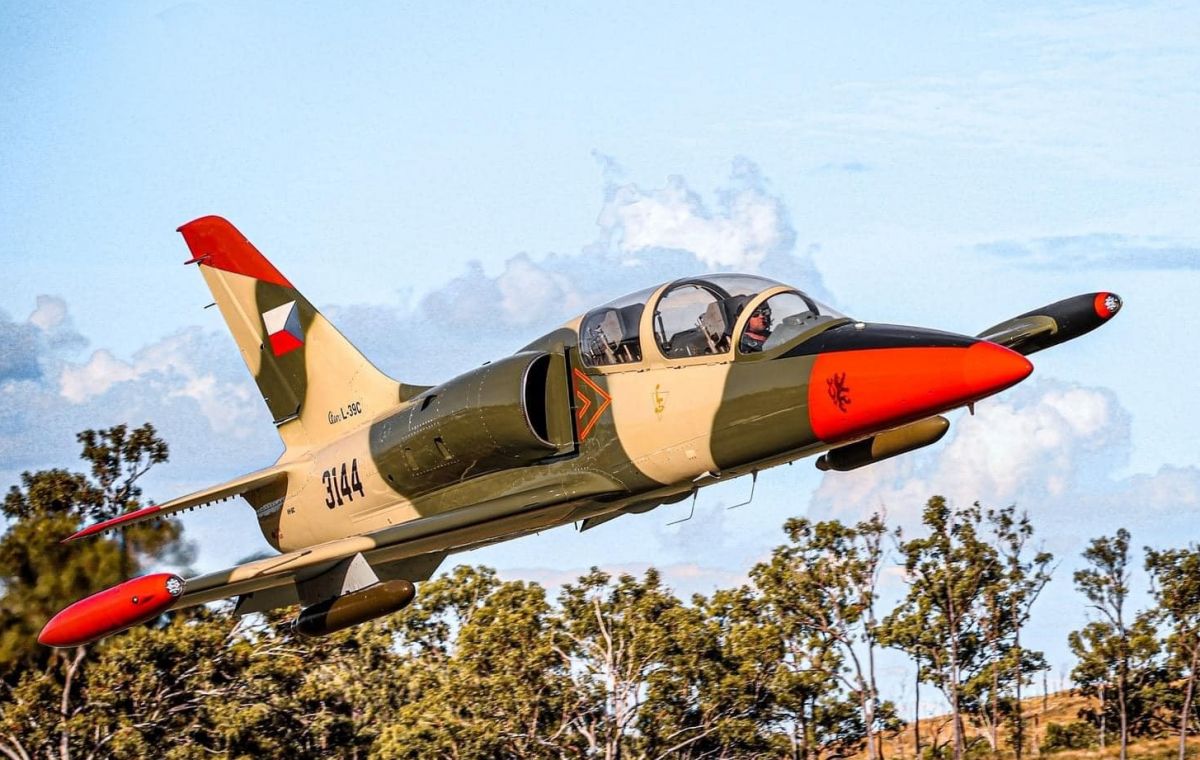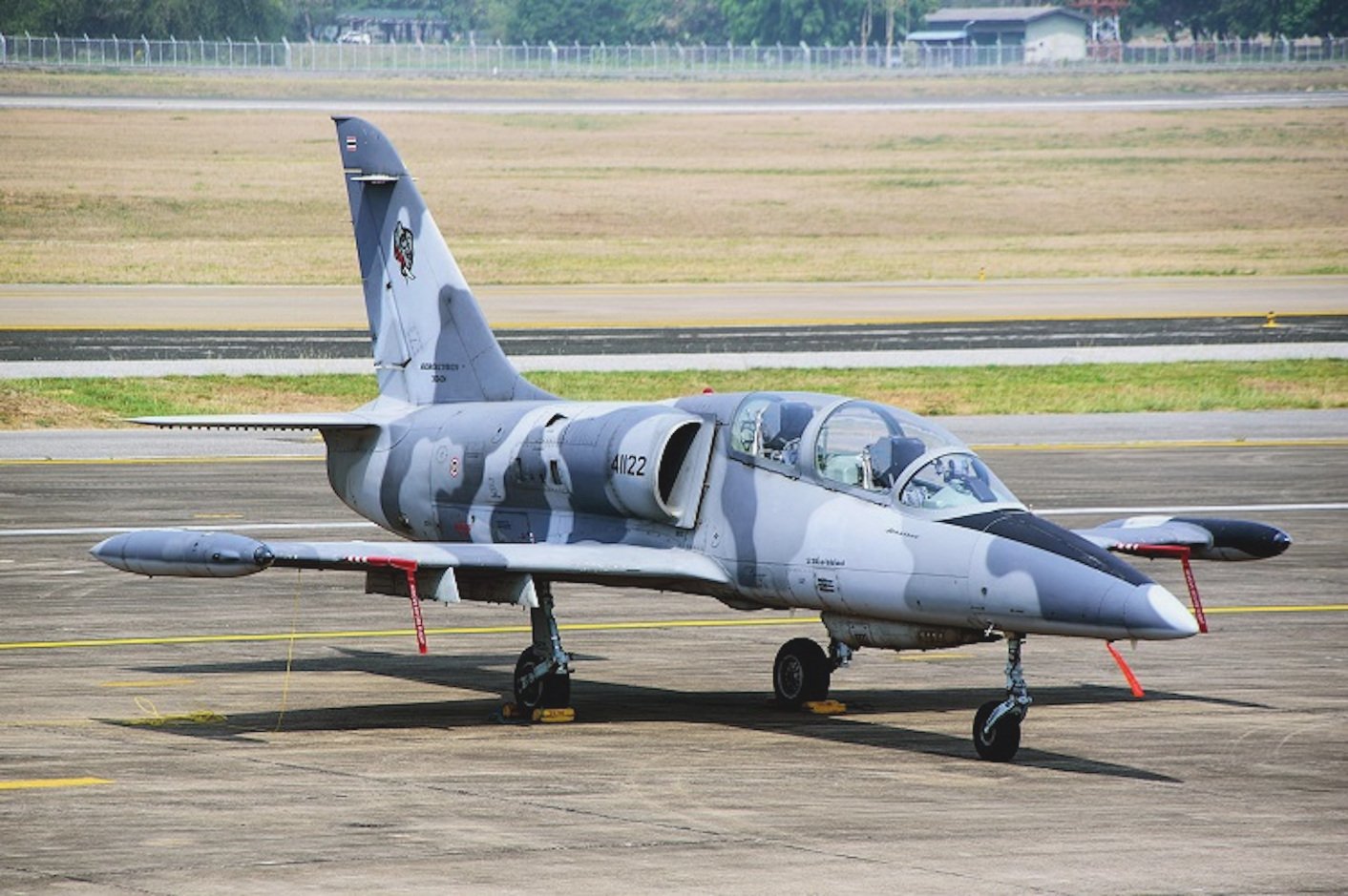L-39za Aircraft - The L-39 Albatros is a two-seat, single-engine aircraft designed and manufactured by Aero Vodochody for the Czechoslovak Air Force. It was the first aircraft with turbofan engines, which was later converted to the L-59 Super Albatros.
The Aero L-39 Albatros is used as a versatile training jet, as well as a strategic reconnaissance aircraft and a light ground combat aircraft.
L-39za Aircraft

The aircraft was built on the basis of its predecessor L-29 Maya / Delfin. About 2,900 L-39s are currently in service with 30 air forces around the world.
Aero L 39 Albatross Trainer Aircraft Hand Carved And Painted
In June 2010, Algeria signed a contract with Aero Vodochody for the supply of L-39 aircraft. Another contract was signed with Yemen in February 1999 for the supply of 12 L-39C training aircraft.
The L-39 has 12 variants including L-39X-01 – X-07, L-39C, L-39CM, L-39M1, L-39V, L-39ZO, L-39ZA, L-39ZAM, L-39ZA/ ART, L-39MS, L-139 Albatros 2000 and L-159.
The L-39C is an improved version equipped with two pylons under each wing and can be used for standard training missions.
The L-39ZO is a training aircraft equipped with four pylons that can hold 1,150 kg of payload. This variant completed its first flight in June 1975 and entered service with Iraq in 1977.
Flying The L 39 Albatross
L-39ZA is an armed variant based on the L-39ZO. It is equipped with a Gsh-23L 23 mm twin-barreled gun and K-13 or R-60 air-to-air missiles.
L-39MS is an extended version of the L-39 training jet aircraft. It is equipped with a reinforced frame, extended nose, tandem cockpit and Lotariov DV-2 engine.
The L-159 is a modern training aircraft combined with foreign avionics and a Honeywell F124 engine. Aero and the Czech army signed a contract for the modernization of L-159 aircraft in June 2017.

The latest variant of the L-39NG aircraft is a modern and efficient light jet designed to serve advanced air forces in light attack and/or as a single reliable training system. The aircraft is based on the new L-39 aerodynamic concept with optimized features to minimize drag and increase efficiency.
Flight Of The Albatros
Design of the L-39 Trainer Jan Wiecek started designing the L-39 in 1966. The aircraft was designed to conduct basic and advanced pilot training, operational training, border patrol, target simulation and light combat attack.
It can contain five main fuel tanks with rubber bags behind the cab. Each fuel tank holds 1055 liters of fuel.
Two more fuel tanks with a capacity of 100 liters are installed on non-retractable wing tips. The jet training aircraft is additionally equipped with two 350-liter unloading tanks on the on-board underwing pylons, which increases the total fuel volume to 1,955 liters.
The development of the L-39 Albatros began in the 1960s. The first flight of the plane was made in November 1968.
File:l 39za Albatros.jpeg
Full production was delayed until 1972 due to design flaws in the air intake. The L-39 entered the Czechoslovak Air Force in 1974, when the design flaws were eliminated.
Features The long pointed nose, mounted in the forward cockpit of the L-39, has electronic equipment and an onboard oxygen generation system. The aircraft is equipped with a smoke extraction system, an evacuation system, a tricycle landing system, anti-collision lights and landing lights.
It is also equipped with the SAFIR 5 auxiliary drive system, which has the ability to restart the engine automatically on the ground and the emergency engine.

The L-39 has a pressure cockpit equipped with two Czech VS-1-BRI missile ejection seats, with the rear seats slightly raised.
An Aero L 39za Albatros Trainer Aircraft Of The Czech Air Force In Flight Over Hradec Kralove, Czech Republic Stock Photo
The cockpit is equipped with a flight computer, head-up display (HUD), multi-function display (MFD), air data computer (ADC) and forward control panel.
Instrument landing system, information transponder, electronic backup instrument system, tactical air navigation system and Bendix/King removal equipment are part of the cockpit.
The communication and navigation devices installed in the aircraft include a manual throttle and stick control system, a very high frequency radio, a global positioning system and an inertial navigation system.
The avionics suite equipped with the L-29 includes a horizontal attitude indicator, a radio altimeter, an internal communication and radio control panel, a radio magnetic indicator, a backup radio control panel, an electronic flight instrument system, and an orientation and guidance system.
Aviation Photographs Of Aero L 39za Albatros
The L-39 has four lifting points, two on each wing and two under the wings. It can accommodate 1000 kg of payload. The aircraft is equipped with a 23-mm-gsh-23 double-barreled gun, which can fire ammunition at a rate of 150 cartridges per minute.
The aircraft also has FFAR or CRV-7 missiles and AIM-9 air-to-air missiles. All weapons can be controlled using the weapons control panel mounted in the forward cockpit.
The L-39 Albatros is equipped with a twin-shaft Ivchenko AI-25 TL turbofan engine capable of producing a maximum thrust of 16.87 kN.

The length and width of the engine are 3.3 m and 0.98 m respectively. Height 0.95 m. Each motor weighs about 350 kg and has a service life of 4000 hours.
L 39 ,l 39za/art Albatros Of Royal Thai Air Force ,rtaf. Stock Photo, Picture And Royalty Free Image. Image 18646575
L-39 can gain altitude at a speed of 21 m/s. The maximum and cruising speed of the aircraft are 910 km/h and 750 km/h respectively. Its stall speed is 158 km/h. The maximum range is 1350 km.
The service ceiling is 11,000 m. Its maximum duration is two hours and 45 minutes. The aircraft weighs approximately 3,400 kg, and its maximum take-off weight is 4,700 kg. The Aero L-39 Albatros is used as a maneuverable jet trainer, tactical reconnaissance aircraft and light ground support fighter.
The Aero L-39 Albatros is used as a maneuverable jet trainer, tactical reconnaissance aircraft and light ground support fighter. The jet is mainly used to train future pilots of larger aircraft such as the MiG-29 Fulcrum. However, the Albatross is still used by many air forces as an attack aircraft for air-to-ground support missions or as a tactical reconnaissance aircraft. Since its introduction in 1971, more than 2,800 aircraft have been built in various versions. The L-39 Albatros is a modern trainer jet of the same generation as the F-14 Tomcat or the MiG-23 Flogger, and was launched shortly before the American F-15 Eagle or the Russian MiG-29 Fulcrum.
The L-39 Albatros comes from a Czech production line. The Aero L-39 Albatros was produced in large numbers at the factories of Aero Vodochody, the world's largest manufacturer of military training aircraft. In addition to the popular L-39 Albatros, Aero Vodochody also built its predecessor, the L-29 Delfin, and its successor, the L-159 Alca Attacke. In addition, Aero Vodochody builds MiG models under license, such as the MiG-15 offered in the Czech Republic.
Aircraft Photo Of 0021
We are proud to let our customers test pilots for this aircraft manufacturer in their own aircraft. These aero test pilots are some of the best and know their aircraft like no one else in the world. And even after a thousand hours, they still enjoy every flight in their planes - you can feel it.
The L-39 Albatros is our smallest and cheapest jet available in many locations. It is a training aircraft that can also be used to attack ground targets. The L-39 Albatros impresses with good maneuverability and excellent visibility from both positions in the cockpit thanks to the stepped tandem cockpit. Very good performance at subsonic speeds make the L-39 Albatros jet an ideal aircraft for a cost-effective flight on a real fighter. The Royal Thai Air Force (RTAF) has finally retired its long-term Aero Vodochody L-39ZA / ART Albatross Training / Close Air Support (CAS) aircraft.
The last remaining aircraft was decommissioned on March 31 in a ceremony at Chiang Mai Air Base, where 41 Wing's 411 "Thunder" Squadron was the last unit to operate the type. Air Chief Marshal Airbull Sutiwan, Commander-in-Chief, RTAF, presided over the event which was also attended by senior Air Force officers. During the ceremony, the aircraft performed a final fly-by, ending with a traditional water cannon salute as a final example of taxiing.

A Royal Thai Air Force (RTAF) L-39ZA/ART Albatros - serial KhF1-22/37 '41122' - on the ramp at Chiang Mai Air Force Base during a ceremony for the type's retirement from RTAF service on 31 to mark March. RTAF
Aero L 39 Albatros Jet Moveable Control Surfaces Pilot Training Aid Solid Kiln Dried Mahogany Wood Handmade Desktop Display Scale Replica Aircraft Model Vh Lcj
The RTAF placed an initial order for 36 aircraft, the first of which were delivered in October 1993. They were supplemented in April 1997 by four more aircraft. They were used to train fighter/attack pilots, CAS and combat search and rescue. In addition to the 411 Squadron, the type has also been operated by the 401 Dragon Squadron at Takhli Airbase in recent years, where it was replaced by the KAI T-50TH in 2018 following the transfer of the L-39ZA/ARTs to the Chiang Mai unit last year.
Although no replacement aircraft has yet been ordered, the RTAF is expected to receive the Beechcraft AT-6E Wolverine, designated the A-6TH. Plans for the acquisition were revealed at a defense symposium in August 2020, when it was also announced that the T-6TH, a variant of the T-6 Texan II, would be purchased to replace the Pilatus PC-9 in training. On September 28, Textron Aviation Defense announced that the RTAF had ordered 12 T-6 TH Texan IIs, indicating that for commonality the A-6TH order is also likely to be fulfilled.
L 19 aircraft, aero l 39za albatros, l-39za albatross, l-39za, l 39za albatros, l 500 aircraft, l 39 aircraft for sale, l 100 aircraft for sale, aircraft l track, l band antenna aircraft, l 3 aircraft, l 39za
0 Comments